Tiered gardens transform sloping landscapes into stunning multi-level outdoor spaces that maximize both beauty and functionality. These vertical gardens create distinct zones for different activities while preventing soil erosion and adding dramatic visual interest to any property. Whether you're dealing with a challenging hillside or simply want to add dimension to a flat yard, tiered garden designs offer endless possibilities for creative landscaping. From modern concrete terraces to rustic wooden raised beds, each approach brings its own character and practical benefits. These 25 tiered garden ideas showcase diverse styles, materials, and functions to inspire your next landscape transformation.

1. Natural Stone Terraced Garden with Integrated Seating
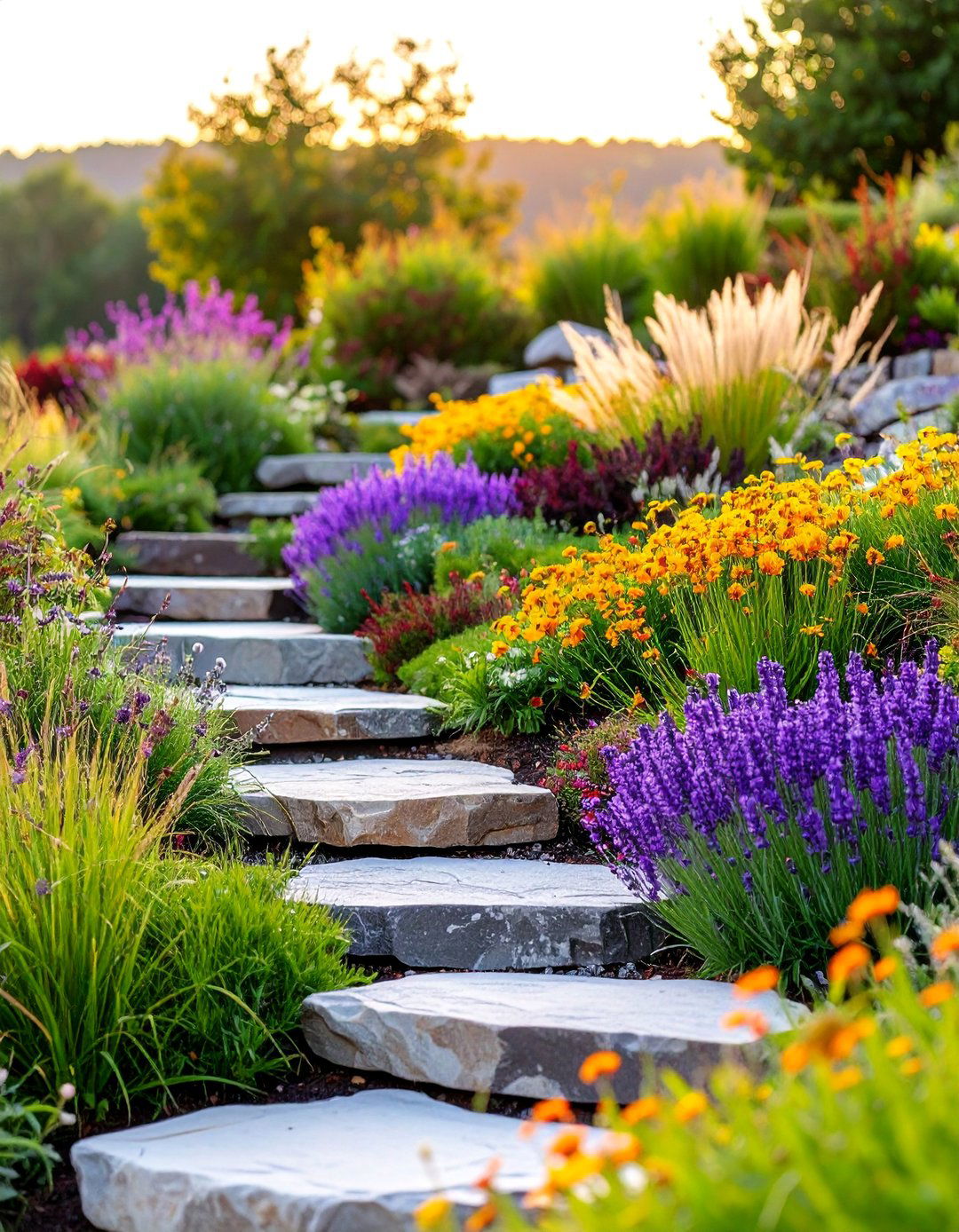
Create a sophisticated multi-level garden using natural limestone or sandstone retaining walls that double as seating areas. This design features three to four tiers with built-in stone benches along the retaining walls, providing comfortable spots for relaxation while maximizing planting space. Each level can accommodate different plant types, from tall ornamental grasses on upper tiers to low-growing perennials below. The natural stone develops beautiful weathering over time, blending seamlessly with the landscape. Wide stone steps connect each level, making maintenance easy while creating an elegant pathway through the garden. Strategic lighting between stones enhances evening ambiance and safety.
2. Cedar Raised Bed Tiered Vegetable Garden
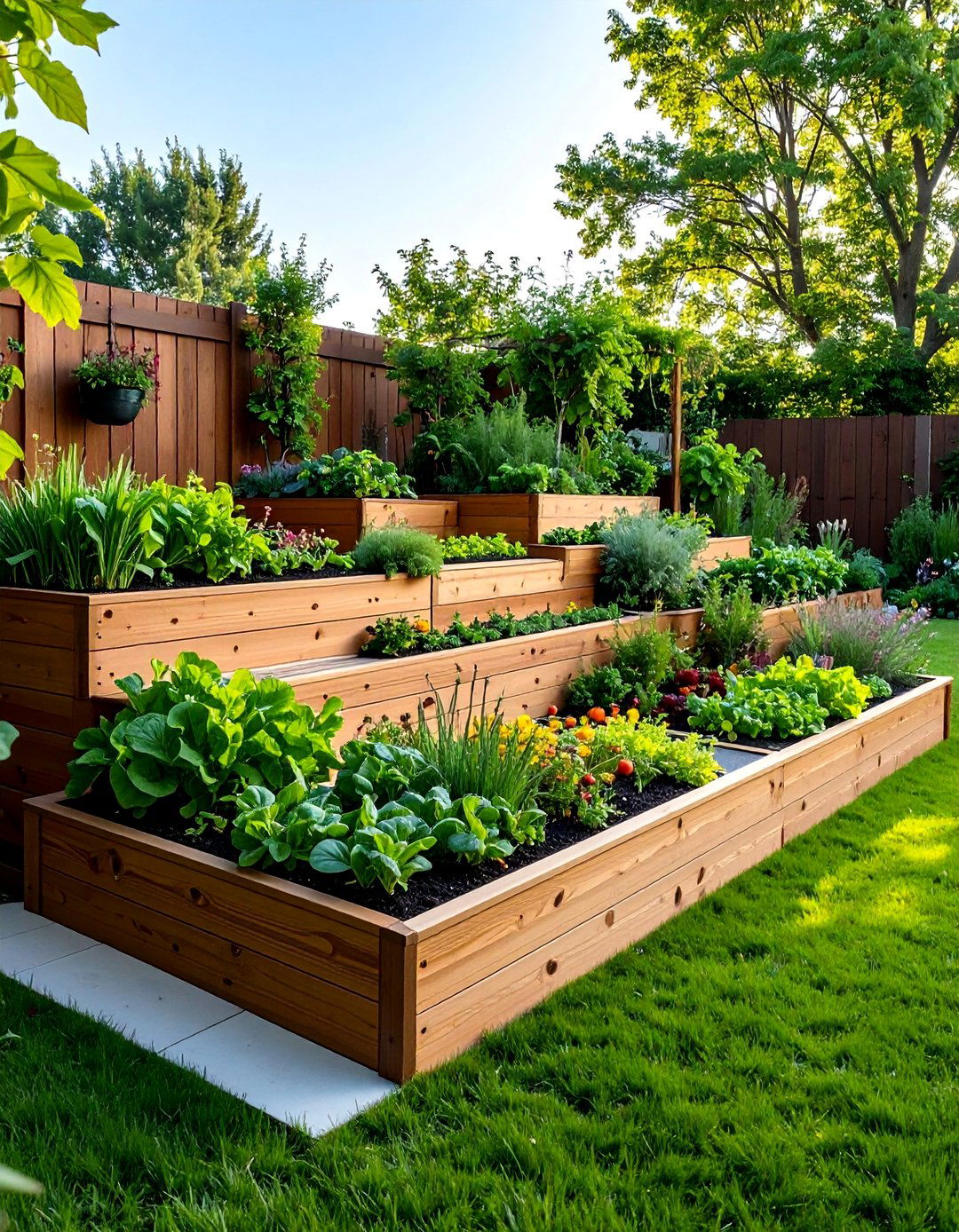
Design a productive three-tier vegetable garden using rot-resistant cedar planks arranged in descending heights from 36 inches to 12 inches. The top tier accommodates deep-rooted vegetables like tomatoes and peppers, while middle and lower levels house herbs, lettuce, and shallow-rooted crops. This design maximizes growing space in small areas while providing easy access for planting, weeding, and harvesting. Install drip irrigation systems on each level for efficient watering. The natural cedar finish complements any landscape style, and the stepped design creates excellent drainage while preventing soil compaction. Include pathways between levels using mulch or gravel for clean, accessible maintenance routes.
3. Modern Concrete Block Tiered Garden with Architectural Plants
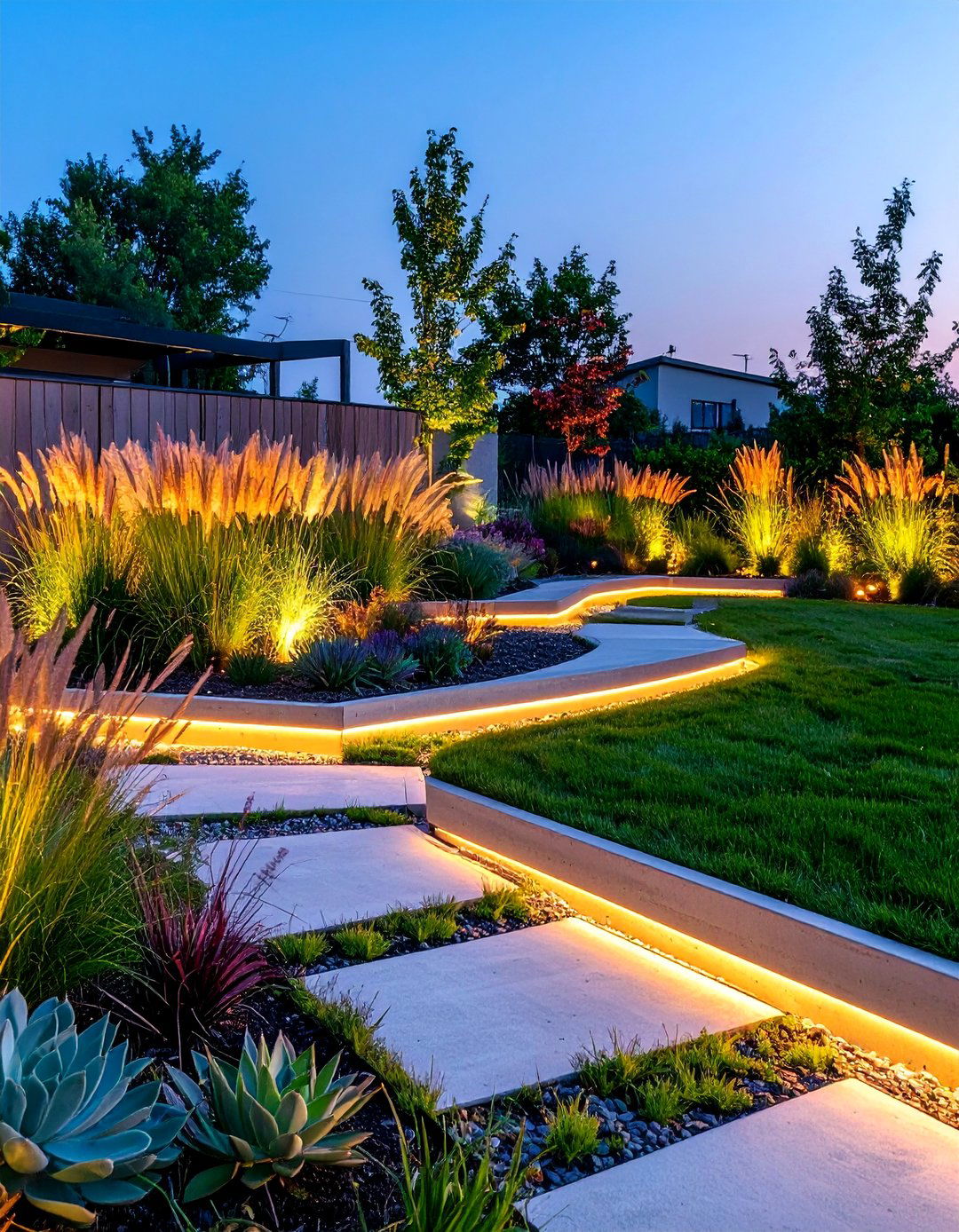
Construct a contemporary tiered garden using large concrete masonry blocks arranged in clean, geometric lines. This minimalist design features three ascending levels with architectural plants like ornamental grasses, succulents, and sculptural shrubs. The concrete blocks provide excellent stability and can be arranged in various patterns for visual interest. Each tier showcases different plant textures and heights, creating a living sculpture effect. The neutral gray concrete serves as a perfect backdrop for colorful flowering plants or maintains a monochromatic green palette for ultra-modern appeal. Integrated LED strip lighting within the blocks creates dramatic evening illumination while highlighting the garden's architectural elements.
4. Rustic Railway Sleeper Tiered Garden with Cottage Plants
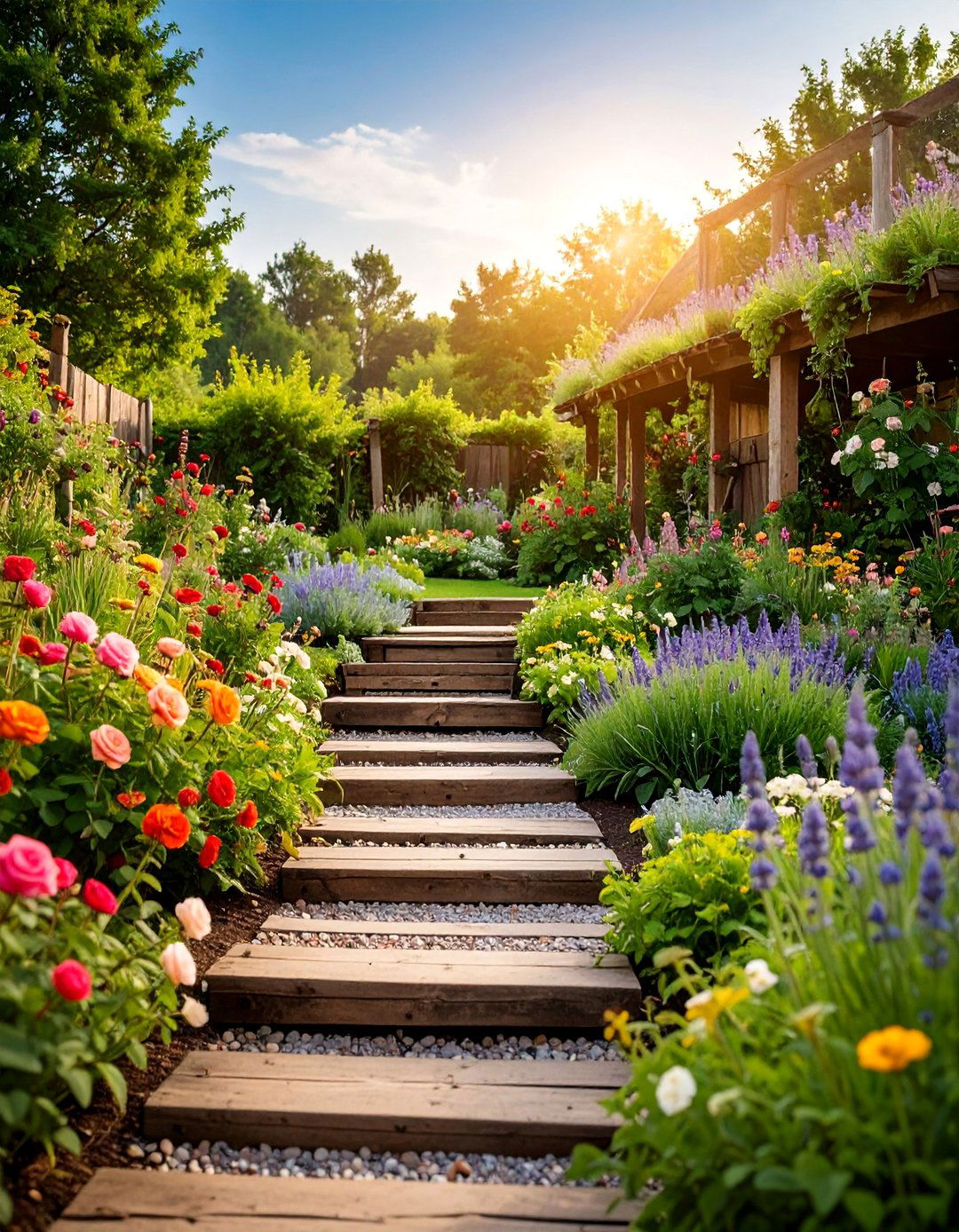
Transform a sloping area using reclaimed railway sleepers arranged in informal, organic tiers that follow the natural contours of the land. This rustic design accommodates cottage garden favorites like roses, lavender, foxgloves, and climbing vines. The weathered wood provides natural character and excellent drainage while creating cozy planting pockets of varying sizes. Each level can be filled with rich compost and topsoil for optimal plant growth. The irregular heights and organic arrangement create a naturalistic appearance that ages beautifully. Gravel or bark chip pathways wind between levels, providing access while maintaining the informal, countryside aesthetic that complements traditional home styles perfectly.
5. Japanese-Inspired Zen Tiered Garden with Water Features
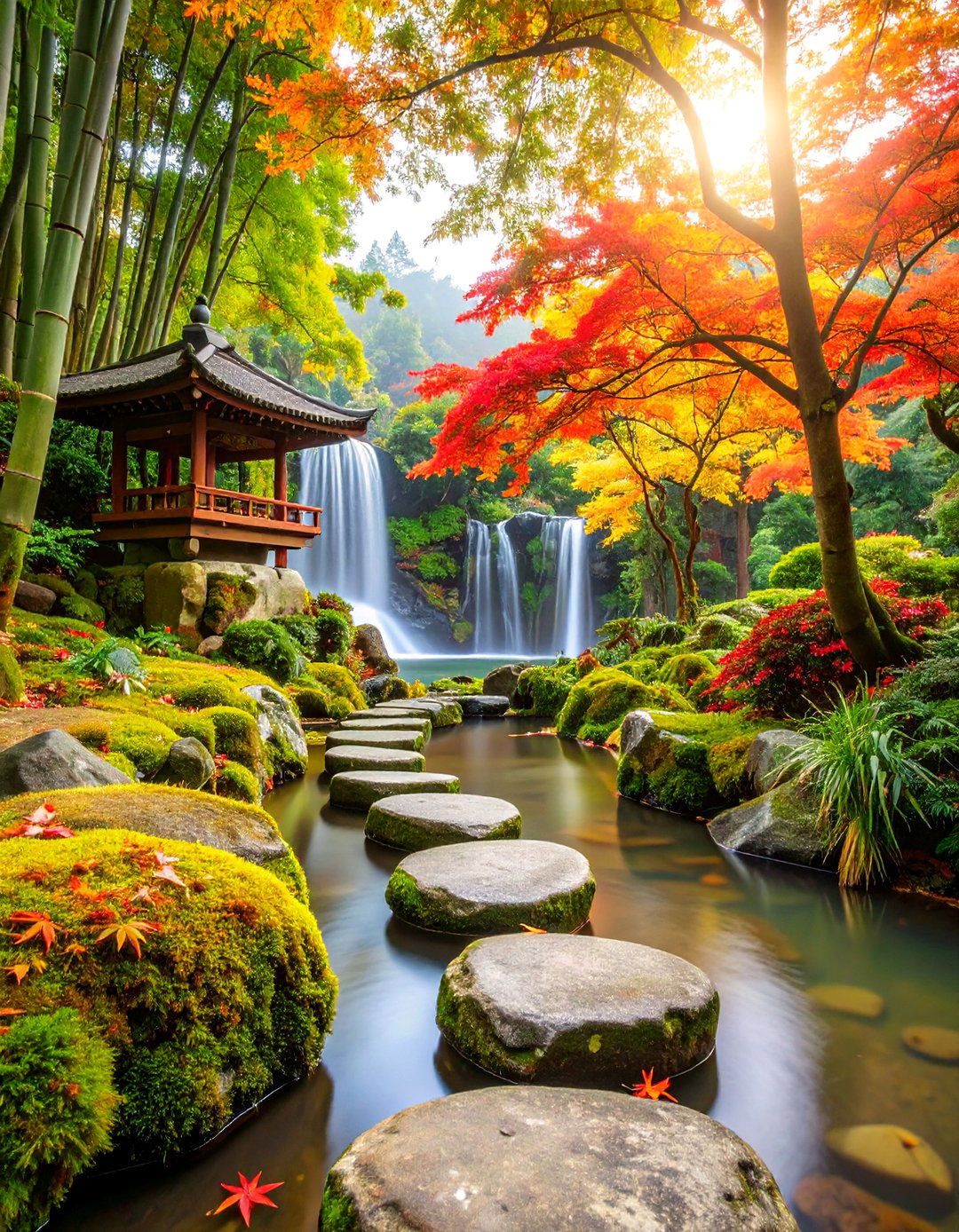
Create a serene meditation space using natural stone and bamboo elements arranged in harmonious tiers. This design incorporates water features like small cascading fountains or stone basins between levels, surrounded by carefully selected plants including Japanese maples, ferns, and moss. Each tier represents different elements of nature, with raked gravel areas symbolizing water and strategically placed stones representing mountains. The design emphasizes asymmetrical balance and natural materials throughout. Stepping stones create a meandering path through the levels, encouraging slow, mindful movement. The gentle sound of water flowing between tiers enhances the peaceful atmosphere, making this perfect for meditation and quiet contemplation in any outdoor space.
6. Gabion Wall Tiered Garden with Mediterranean Plants
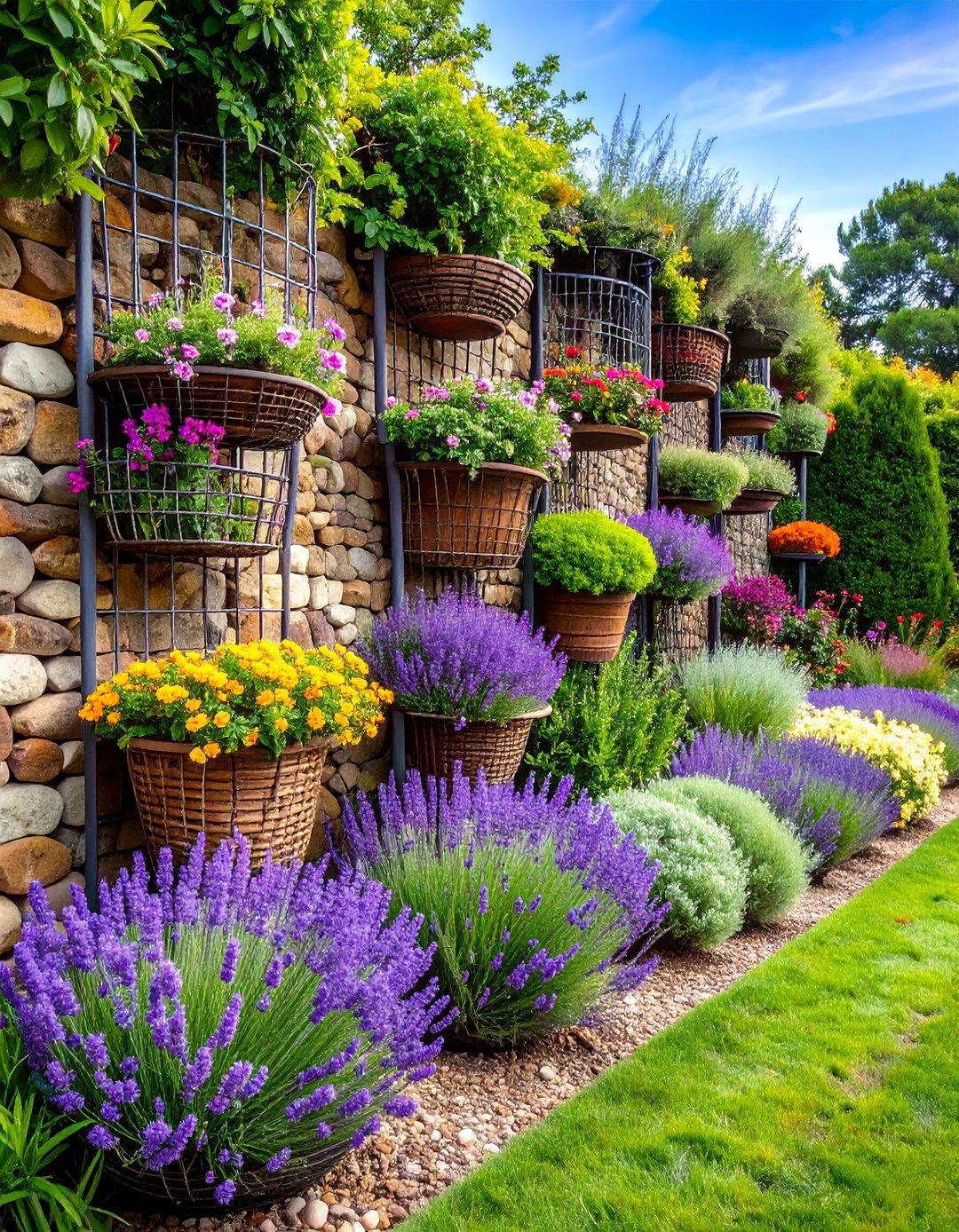
Construct dramatic tiered levels using gabion baskets filled with local stone or recycled concrete for an industrial-meets-natural aesthetic. This contemporary design works exceptionally well with Mediterranean plants like olive trees, rosemary, lavender, and succulents that thrive in well-draining conditions. The metal mesh containers provide excellent drainage while the stone fill creates thermal mass that moderates soil temperature. Each tier can use different stone colors or sizes for visual variety. The perforated design allows air circulation around plant roots and creates interesting shadow patterns. This low-maintenance approach requires minimal watering once established and develops beautiful patina over time, blending industrial materials with organic plant forms perfectly.
7. Brick Terraced Garden with Formal Herb Arrangement

Design an elegant three-tier herb garden using traditional brick retaining walls arranged in formal geometric patterns. This classic design features organized plantings of culinary herbs like basil, thyme, oregano, and sage arranged in neat rows or geometric blocks. The brick construction provides excellent heat retention for Mediterranean herbs while creating a timeless aesthetic that complements period homes. Each level can be dedicated to specific herb families or cooking styles. Wide brick coping provides space for garden tools and allows comfortable seating during harvest time. The formal structure contrasts beautifully with the organic growth of herbs, creating an ordered yet lively garden that supplies fresh ingredients while maintaining architectural beauty.
8. Timber Sleeper Tiered Garden with Native Plants
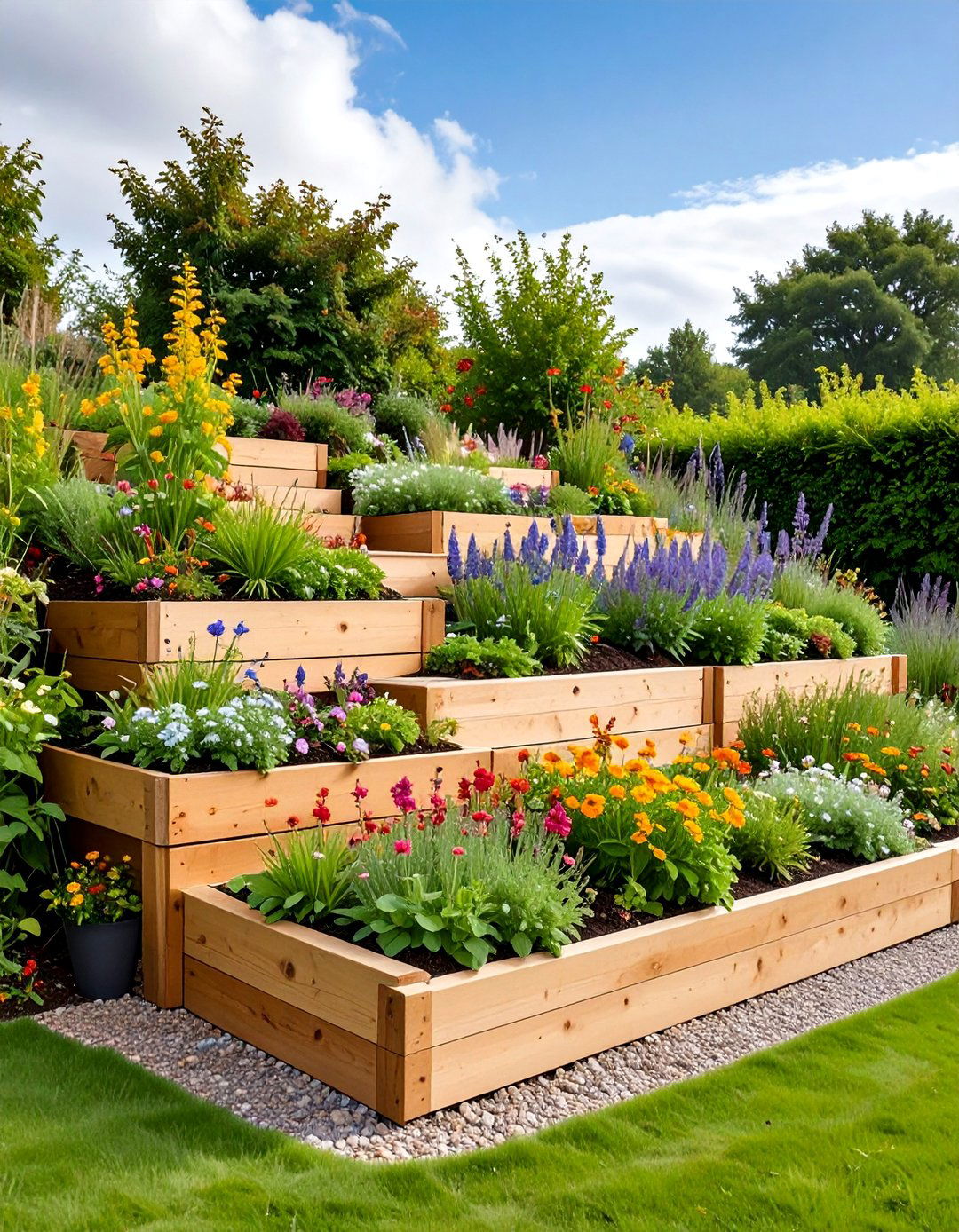
Create an eco-friendly tiered garden using sustainably sourced timber sleepers arranged to showcase native plants and wildlife-friendly species. This environmentally conscious design promotes biodiversity while requiring minimal maintenance once established. Each tier features plants adapted to local climate conditions, from drought-tolerant species on upper levels to moisture-loving varieties below. The natural wood construction provides habitat for beneficial insects while the varied plant heights create diverse microclimates. Native grasses, wildflowers, and shrubs attract butterflies, birds, and pollinators throughout growing seasons. This design demonstrates sustainable gardening practices while creating beautiful seasonal displays that change naturally with weather patterns and wildlife activity, requiring minimal intervention or resources.
9. Retaining Wall Tiered Garden with Cascade Planting
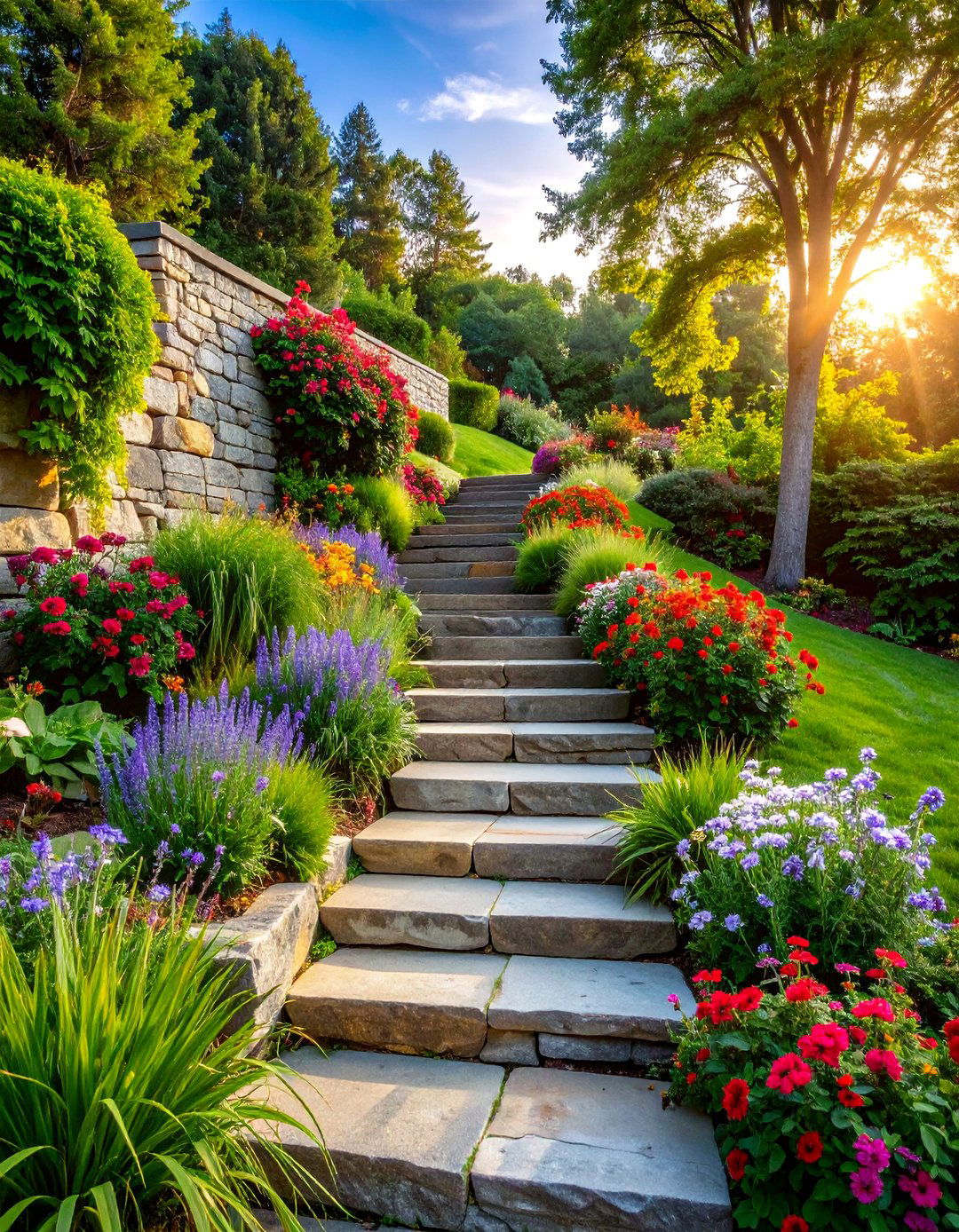
Build substantial retaining walls using engineered stone or concrete blocks to create dramatic elevation changes filled with cascading plants. This design features plants that naturally spill over edges, creating waterfall-like effects with trailing varieties such as creeping jenny, cascading petunias, and trailing rosemary. Each tier supports different plant communities based on sun exposure and drainage characteristics. The substantial construction handles significant elevation changes while providing stable growing conditions. Strategic plant placement creates year-round interest with evergreen trailing plants for winter structure and flowering varieties for seasonal color. The cascading effect softens hard architectural lines while maximizing planting space and creating dynamic visual movement throughout the garden composition.
10. Raised Planter Tiered Garden with Ornamental Grasses
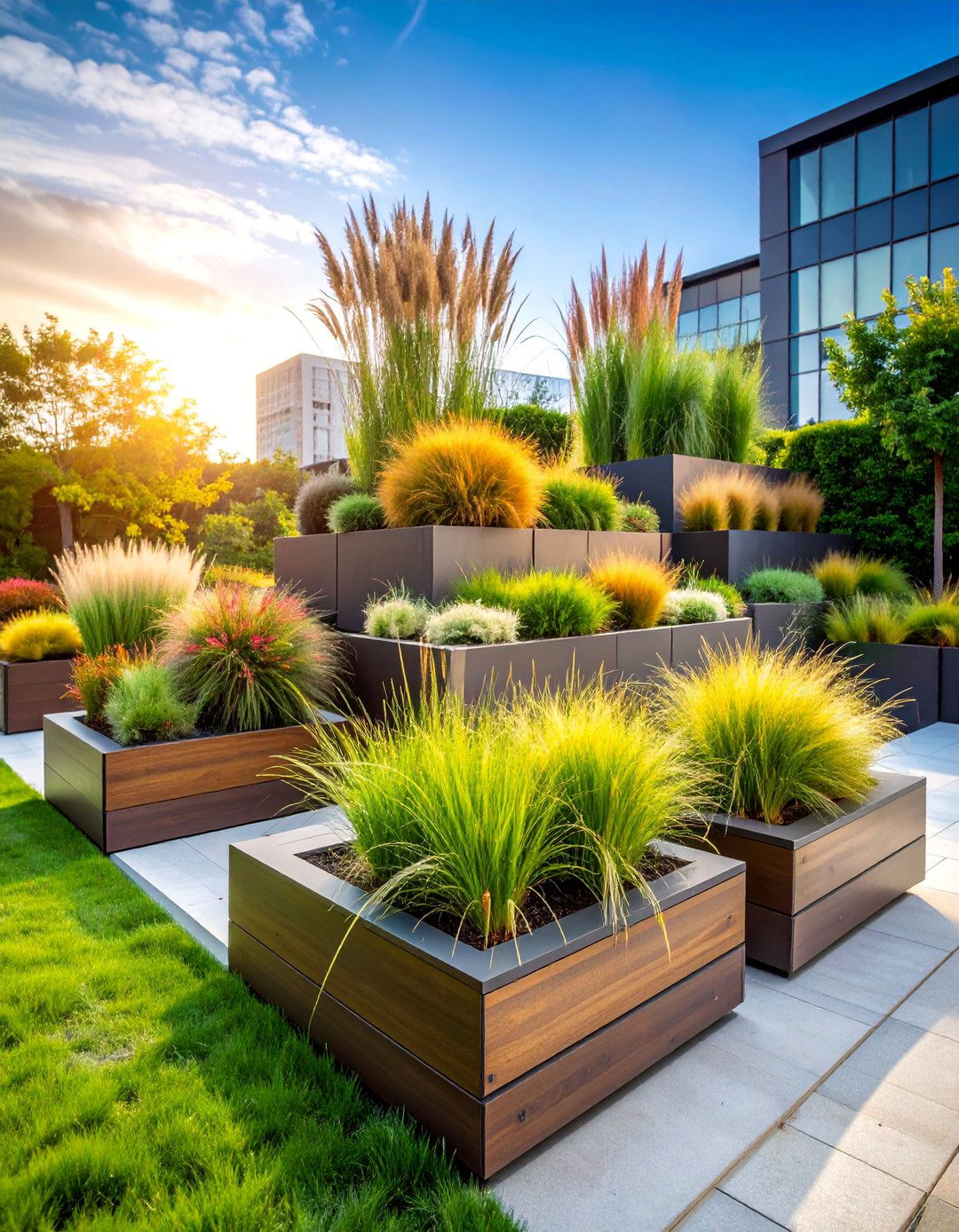
Construct a sophisticated tiered display using raised planters at varying heights filled exclusively with ornamental grasses of different textures, colors, and seasonal characteristics. This low-maintenance design creates movement and sound as grasses sway in breezes. Each tier showcases different grass families, from fine-textured fescues to dramatic pampas grass. The varying heights create layered texture while seed heads provide winter interest and food for birds. The planters can be constructed from various materials including wood, metal, or composite materials depending on desired aesthetic. This design requires minimal watering once established and provides four-season interest with changing colors from green summer growth to golden autumn displays and structural winter forms.
11. Stone Step Tiered Garden with Alpine Plants

Create a naturalistic rock garden using large stone steps and boulders arranged to accommodate alpine and rock garden plants. This design mimics mountain landscapes with plants like sedums, sempervivums, alpine asters, and dwarf conifers thriving in excellent drainage between stones. Each level provides different microclimates from full sun exposed areas to partially shaded pockets. The stone construction requires minimal maintenance while providing thermal mass that protects plants during temperature fluctuations. Gravel mulch between plants enhances drainage and creates a cohesive appearance. This design works particularly well on steep slopes where traditional planting would be challenging, transforming difficult terrain into an attractive, low-maintenance garden that celebrates hardy plant varieties adapted to harsh conditions.
12. Wooden Deck Tiered Garden with Container Plants
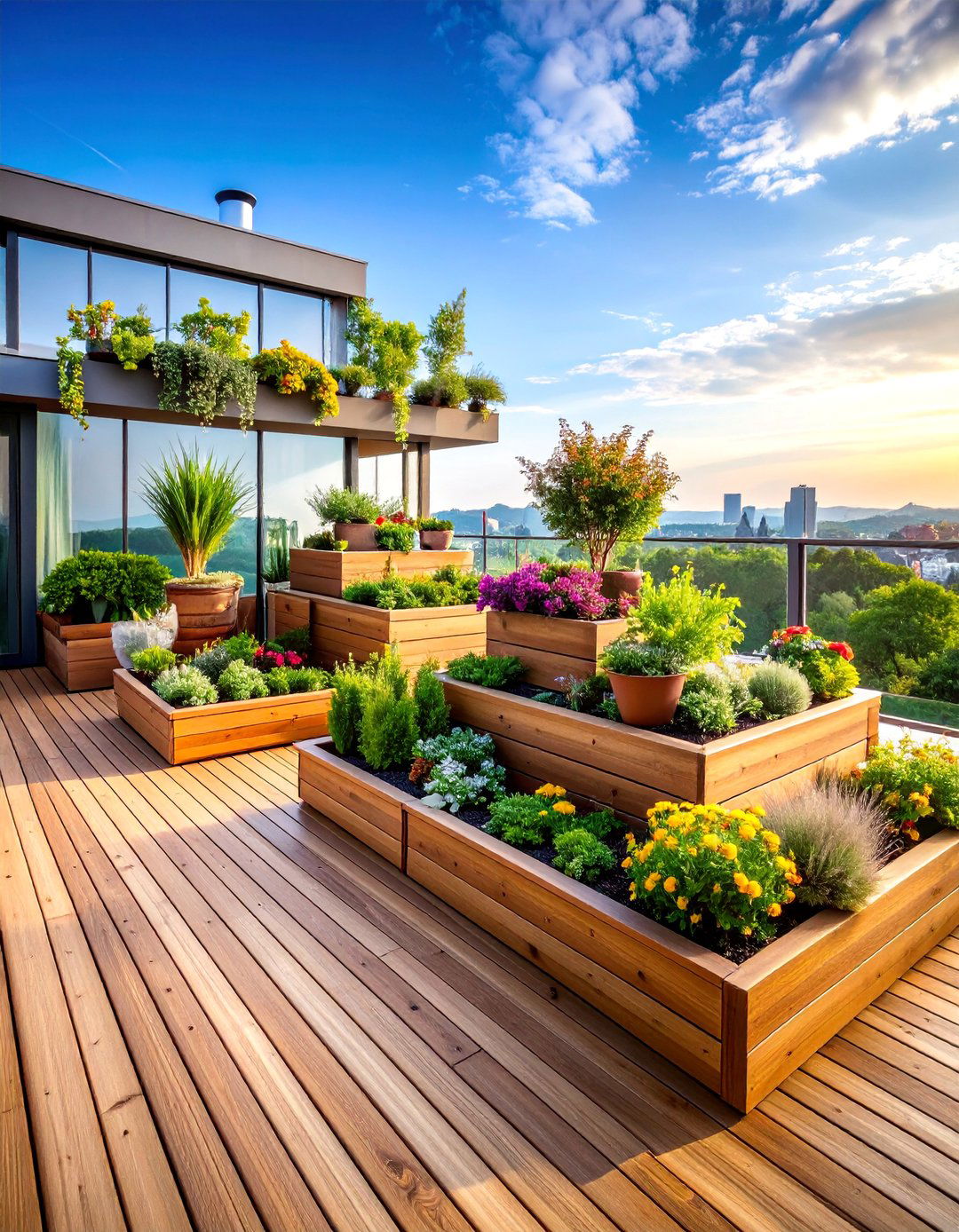
Design a multi-level deck system with integrated planters and container gardens creating tiered growing spaces above ground level. This elevated approach works perfectly for areas with poor soil or drainage issues. Each deck level accommodates different sized containers and built-in planters, allowing complete control over soil quality and plant selection. The wooden construction provides excellent drainage underneath while creating outdoor living spaces between planting areas. This design easily accommodates seasonal changes by moving containers and allows experimentation with different plant combinations. The elevated design provides better visibility of plants while making maintenance tasks more comfortable. Integrated seating and storage maximize functionality while creating an attractive transition between indoor and outdoor living spaces.
13. Fieldstone Tiered Garden with Perennial Borders
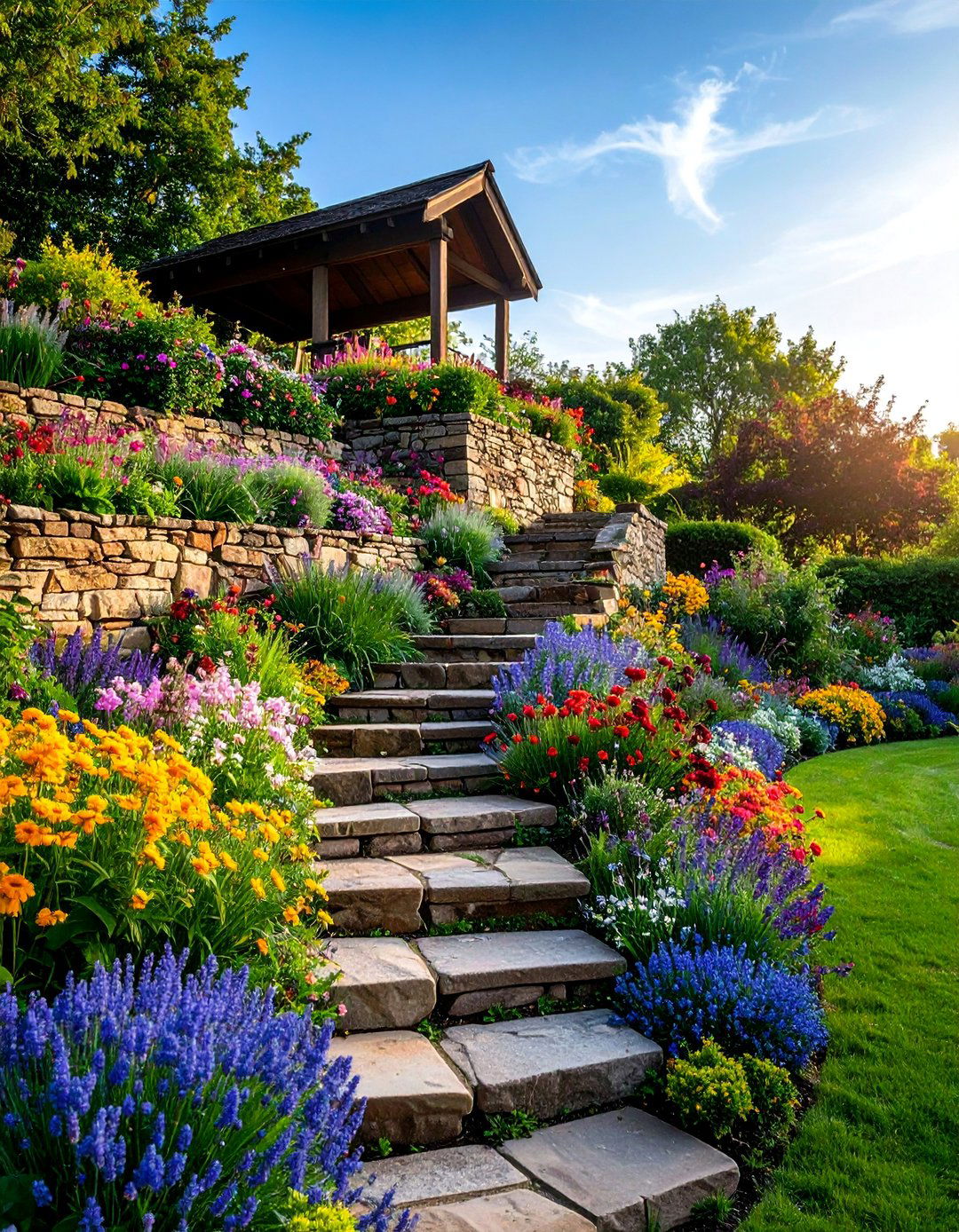
Construct rustic tiers using locally sourced fieldstone arranged in informal walls that accommodate extensive perennial borders. This naturalistic design celebrates regional materials while providing excellent growing conditions for herbaceous perennials. Each tier can be designed around different bloom times, creating sequential flowering displays throughout growing seasons. The irregular stone construction creates planting pockets of various sizes, accommodating everything from large hostas to delicate wildflowers. The natural stone weathers beautifully and provides excellent drainage while moderating soil temperatures. This design requires patience as perennials establish but creates long-lasting displays with minimal annual replanting. The informal construction complements countryside settings while providing structured growing areas that prevent erosion and organize plant collections effectively.
14. Concrete Terraced Garden with Succulent Display

Create a modern drought-tolerant garden using poured concrete or concrete block terraces filled with diverse succulent collections. This contemporary design showcases the architectural qualities of succulents while requiring minimal water and maintenance. Each tier can display different succulent families, from tall agaves and yuccas to spreading sedums and echeverias. The concrete construction provides excellent drainage essential for succulent health while creating clean, modern lines. Strategic placement creates interesting shadow patterns and highlights plant forms. This design works exceptionally well in arid climates or areas with water restrictions. The sculptural qualities of both concrete and succulents create year-round interest with minimal care, making this perfect for busy lifestyles or sustainable gardening practices.
15. Living Wall Tiered Garden with Vertical Planting

Design a space-saving tiered garden using vertical planting systems and living wall techniques to maximize growing area in minimal ground space. This innovative approach uses modular planting systems, pocket planters, or custom-built vertical structures to create multiple growing tiers. Each level accommodates different plant types from trailing varieties that cascade downward to upright plants that add height. The vertical design works excellently for herbs, small vegetables, or flowering annuals. Integrated irrigation systems ensure even water distribution across all levels. This modern approach suits urban environments, small spaces, or areas where ground space is limited. The vertical structure creates dramatic visual impact while providing substantial growing area for food production or ornamental displays.
16. Flagstone Tiered Garden with Water-Wise Plants
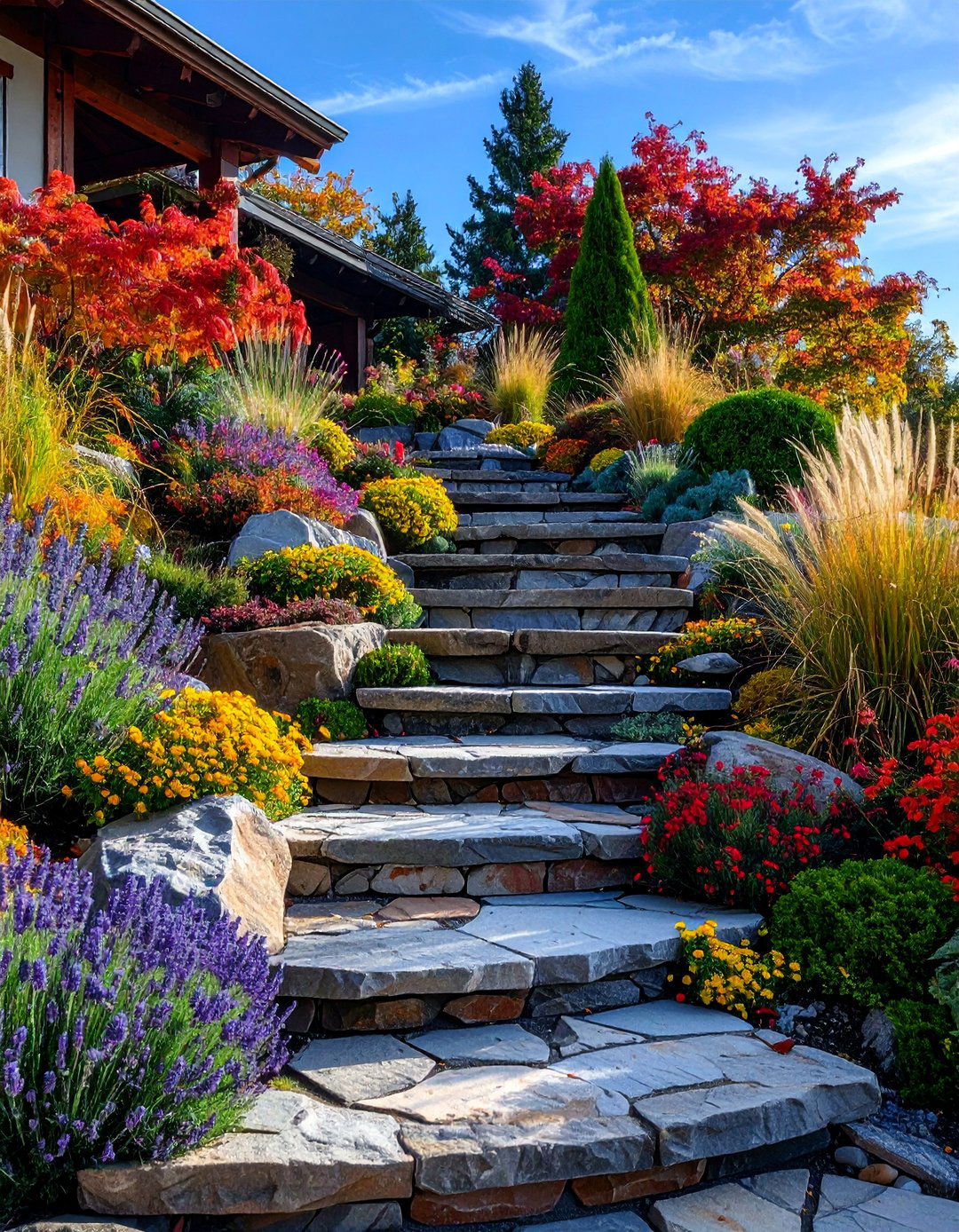
Construct elegant tiers using flat flagstone arranged in broad terraces that showcase water-efficient plants and xerophytic gardens. This sophisticated design combines natural stone beauty with sustainable planting practices. Each tier features plants adapted to low-water conditions including lavender, sage, ornamental grasses, and native wildflowers. The flat stone construction provides excellent stability and creates warming thermal mass that benefits plants in cooler climates. Stone pathways integrate seamlessly with retaining structures, creating unified hardscape design. The natural stone develops beautiful patina over time while requiring minimal maintenance. This design demonstrates water-conscious gardening without sacrificing beauty, creating stunning displays that thrive with minimal irrigation while providing habitat for pollinators and wildlife throughout growing seasons.
17. Bamboo Terraced Garden with Asian-Inspired Plants

Create an exotic tiered garden using bamboo construction techniques and Asian-inspired plantings for a tropical or Oriental garden theme. This design features bamboo fencing, screens, and raised planters creating multiple levels filled with plants like bamboo species, ornamental grasses, ferns, and flowering shrubs. The natural bamboo construction provides sustainable, rapidly renewable materials that create interesting textures and patterns. Each tier can represent different Asian garden principles, from formal arrangements to naturalistic groupings. The bamboo weathers to attractive gray tones over time and requires replacement every few years, allowing design evolution. Water features like bamboo fountains can be integrated between levels. This design creates exotic ambiance while demonstrating sustainable material use and cultural garden traditions.
18. Raised Bed Tiered Garden with Companion Planting
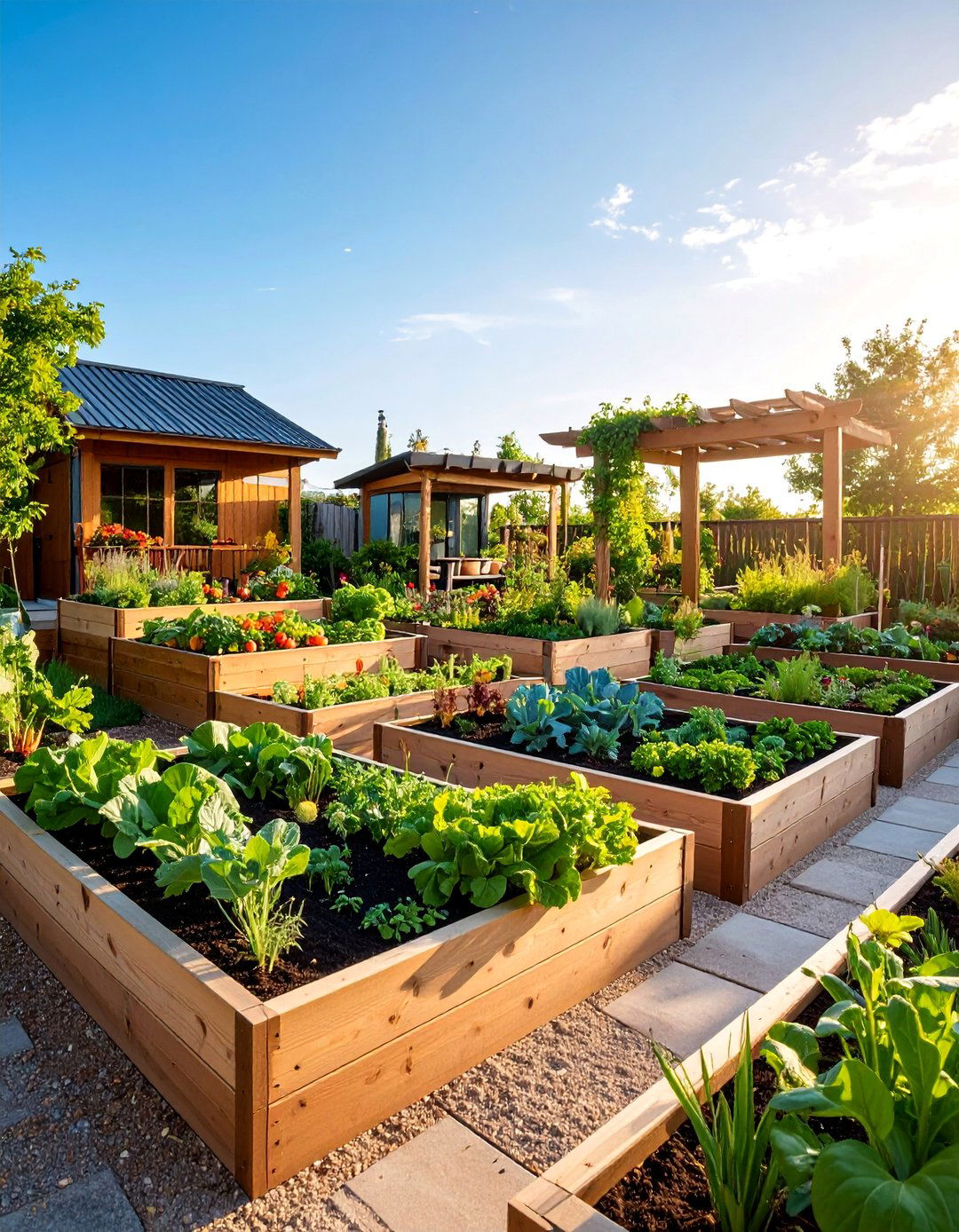
Design a productive tiered vegetable garden using raised beds arranged at different heights to accommodate companion planting principles and maximize growing efficiency. This systematic approach combines compatible plants that benefit each other through pest control, nutrient sharing, or growth habits. Upper tiers house taller plants like pole beans and tomatoes while lower levels accommodate ground covers and root vegetables. Each tier can be organized around plant families or growing requirements. The raised construction provides excellent drainage and soil control while making maintenance comfortable. Paths between levels accommodate wheelbarrows and garden carts. This design maximizes food production while demonstrating organic gardening principles and creating attractive, organized growing spaces that produce abundant harvests throughout growing seasons.
19. Corten Steel Tiered Garden with Contemporary Plants
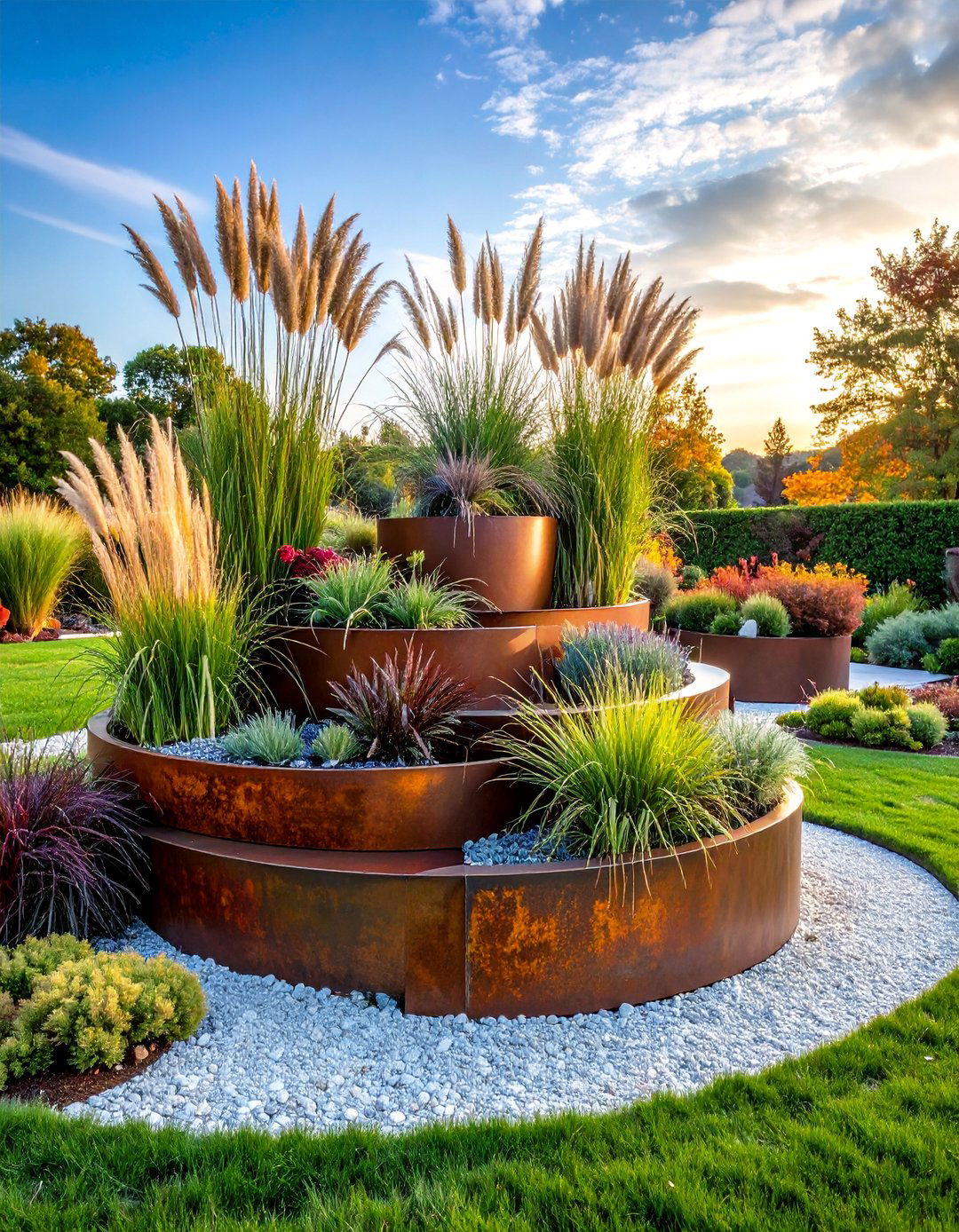
Construct a cutting-edge tiered garden using weathering corten steel planters arranged in geometric compositions filled with architectural plants. This ultra-modern design features the distinctive rust-colored patina of weathering steel combined with contemporary plant selections like ornamental grasses, succulents, and sculptural shrubs. The steel construction provides excellent durability while developing beautiful color changes over time. Each tier can be designed as geometric modules that create interesting compositions and sight lines. The industrial materials contrast beautifully with organic plant forms, creating sophisticated modern landscapes. The steel construction requires minimal maintenance while providing excellent plant growing conditions. This design suits contemporary architecture and demonstrates how industrial materials can create beautiful, functional garden spaces that age gracefully.
20. Natural Boulder Tiered Garden with Wildflower Meadows
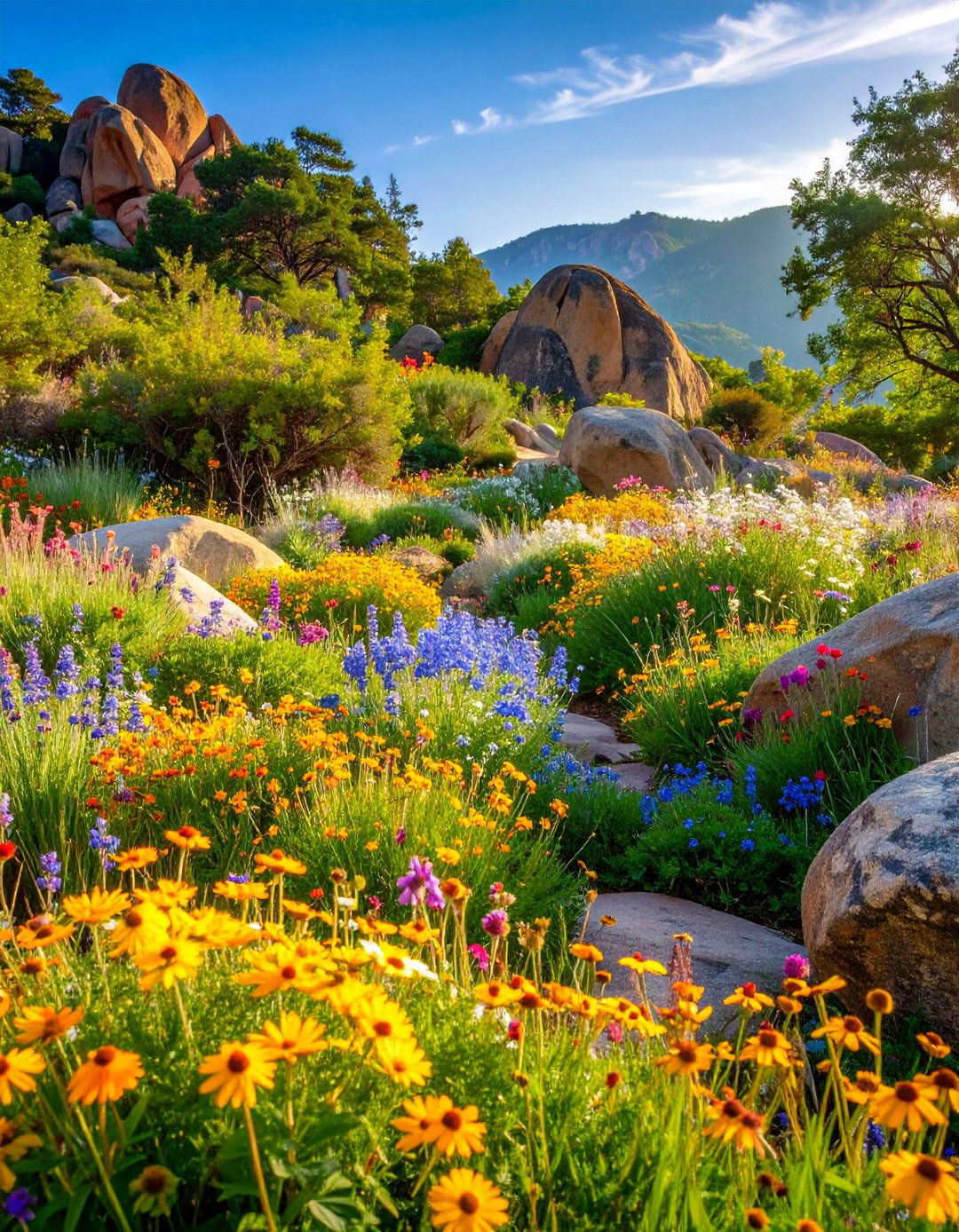
Create a naturalistic tiered garden using large boulders and natural stone arranged to accommodate wildflower meadows and native plant communities. This ecological design mimics natural hillside environments while providing structured growing areas for diverse plant species. Each tier represents different habitat conditions from dry, exposed areas to moister, protected spaces. The boulder construction provides thermal mass and creates microclimates that support varied plant communities. Native wildflowers, grasses, and shrubs create seasonal displays while supporting local wildlife and pollinators. This low-maintenance approach requires minimal irrigation once established and demonstrates sustainable gardening practices. The natural construction methods and plant selections create authentic regional landscapes that change naturally with seasons and weather patterns while requiring minimal human intervention.
21. Paver Stone Tiered Garden with Formal Rose Display
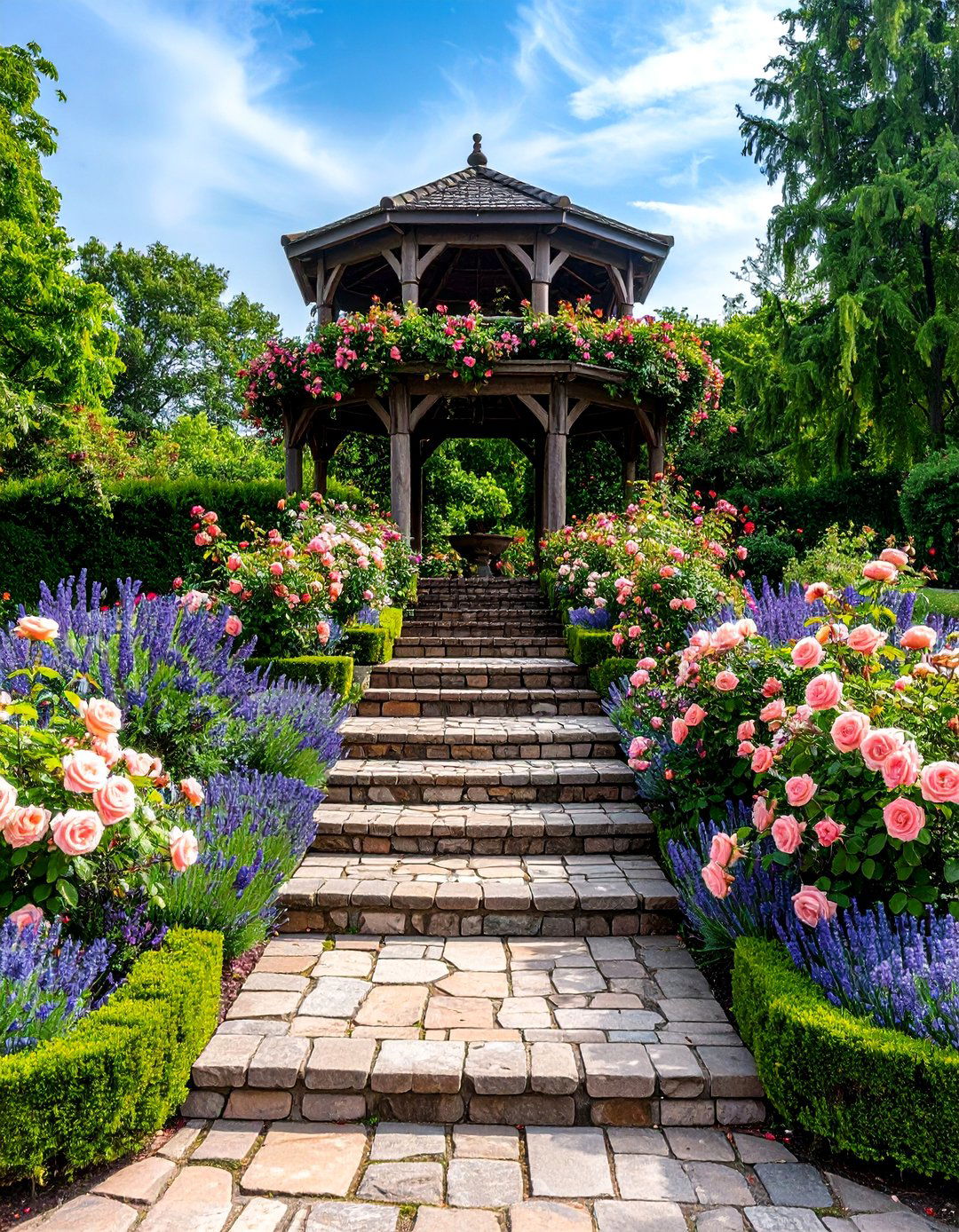
Design an elegant tiered rose garden using manufactured paver stones arranged in formal terraces that showcase different rose varieties and complementary plants. This classic design features roses organized by type, color, or blooming season across multiple tiers. The uniform paver construction provides clean lines and excellent stability while creating wide pathways between levels for maintenance access. Each tier can accommodate different rose care requirements, from hybrid teas requiring more attention to rugosa roses needing minimal care. Complementary plants like lavender, catmint, and clematis enhance rose displays while providing extended blooming seasons. The formal structure creates timeless beauty while organizing rose collections for maximum visual impact and efficient care. This design celebrates traditional rose gardening while providing modern functionality and accessibility.
22. Railroad Tie Tiered Garden with Herb Spirals
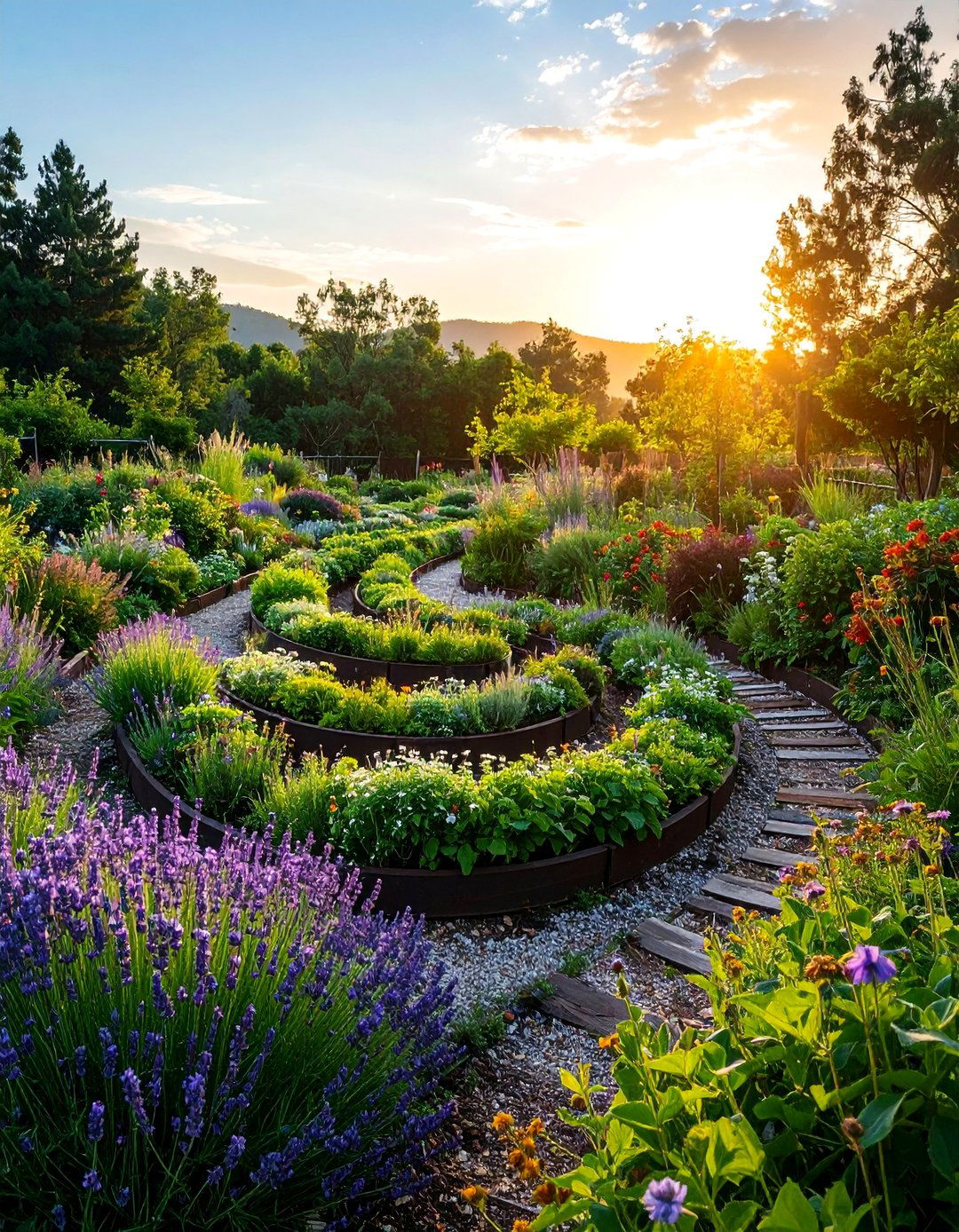
Construct a functional tiered herb garden using railroad ties arranged in spiral patterns that maximize growing space while creating easy access to diverse herb collections. This efficient design incorporates permaculture principles where herbs with similar water and light requirements are grouped together across tiers. The spiral construction creates multiple microclimates from sunny, dry areas perfect for Mediterranean herbs to shadier, moister spots for leafy herbs. The railroad tie construction provides rustic charm while offering excellent stability and drainage. Each tier flows naturally into the next, creating attractive curved pathways and visual interest. This design demonstrates sustainable gardening practices while providing abundant fresh herbs for cooking and medicine. The spiral pattern maximizes edge space, increasing growing area while creating beautiful, functional garden art.
23. Interlocking Block Tiered Garden with Seasonal Displays

Build a versatile tiered garden using interlocking concrete blocks that can accommodate changing seasonal plant displays throughout the year. This adaptable design features removable planters and containers that allow complete seasonal garden makeovers. Each tier can be redesigned multiple times yearly, from spring bulb displays to summer annuals, autumn mums, and winter evergreen arrangements. The modular construction allows expansion or reconfiguration as needs change. The concrete blocks provide excellent stability and drainage while offering neutral backgrounds that complement any plant color scheme. This design suits gardeners who enjoy frequent changes and seasonal decorating. The systematic approach allows experimentation with different plant combinations while maintaining structured, organized appearance. Strategic lighting and accessories can enhance seasonal themes, creating year-round garden interest and celebration.
24. Integrated Seating Tiered Garden with Entertainment Areas

Create a multi-functional tiered garden that combines planting areas with integrated seating and entertainment spaces for outdoor living. This social design features retaining walls constructed with wide caps that serve as seating, along with dedicated areas for dining, cooking, or relaxation on different tiers. Each level serves specific functions while incorporating plants that enhance the entertainment experience, such as fragrant herbs near seating areas and privacy screening on outer edges. The tiered construction creates intimate spaces while maintaining connection between levels. Built-in planters provide structure while leaving flexible space for furniture arrangement. This design maximizes outdoor living potential while incorporating substantial planting areas that provide beauty, privacy, and environmental benefits throughout the property.
25. Mixed Material Tiered Garden with Ecological Zones

Design a comprehensive tiered garden using various materials including stone, wood, metal, and living elements to create diverse ecological zones within one cohesive design. This holistic approach features different construction methods and materials suited to specific plant communities and environmental conditions. Upper tiers might use stone construction for drought-tolerant plants while lower levels employ wood or living materials for moisture-loving species. Each zone demonstrates different sustainable gardening techniques and supports different wildlife communities. The varied construction methods create visual interest while providing optimal growing conditions for diverse plant collections. This design showcases multiple gardening philosophies and techniques while creating comprehensive habitat that supports maximum biodiversity and seasonal interest throughout the property. The integrated approach demonstrates how different materials and methods can work together harmoniously.
Conclusion:
These 25 tiered garden ideas demonstrate the versatility and beauty possible when working with sloped or multi-level landscapes. From sustainable native plant gardens to formal entertaining spaces, each design offers unique solutions for different needs, budgets, and aesthetic preferences. The key to successful tiered gardening lies in choosing appropriate materials for your climate and maintenance preferences while selecting plants that thrive in your specific conditions. Whether you're creating a productive vegetable garden, a low-maintenance drought-tolerant landscape, or an elegant entertainment area, tiered designs maximize both beauty and functionality while solving common landscape challenges with creative, attractive solutions.






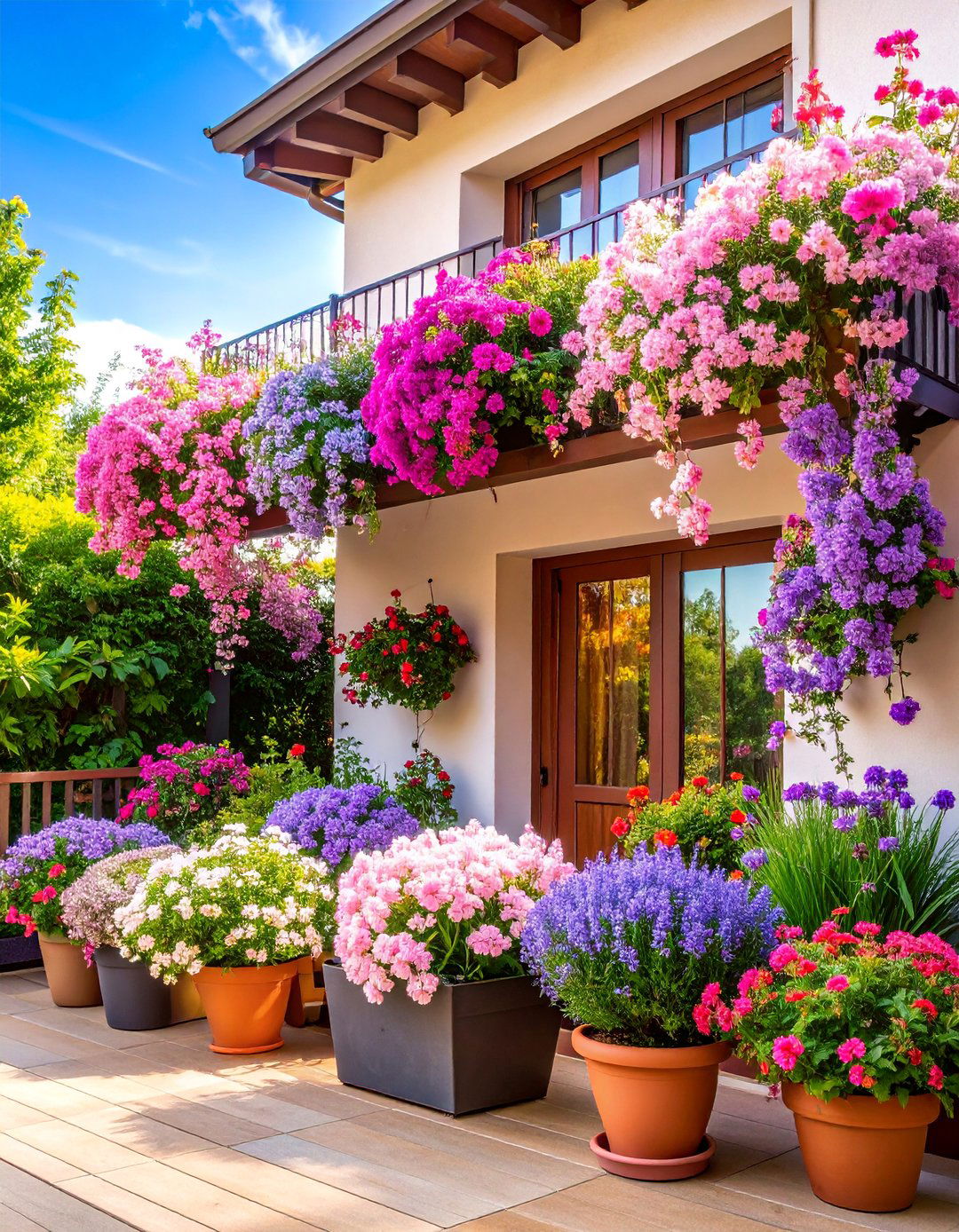
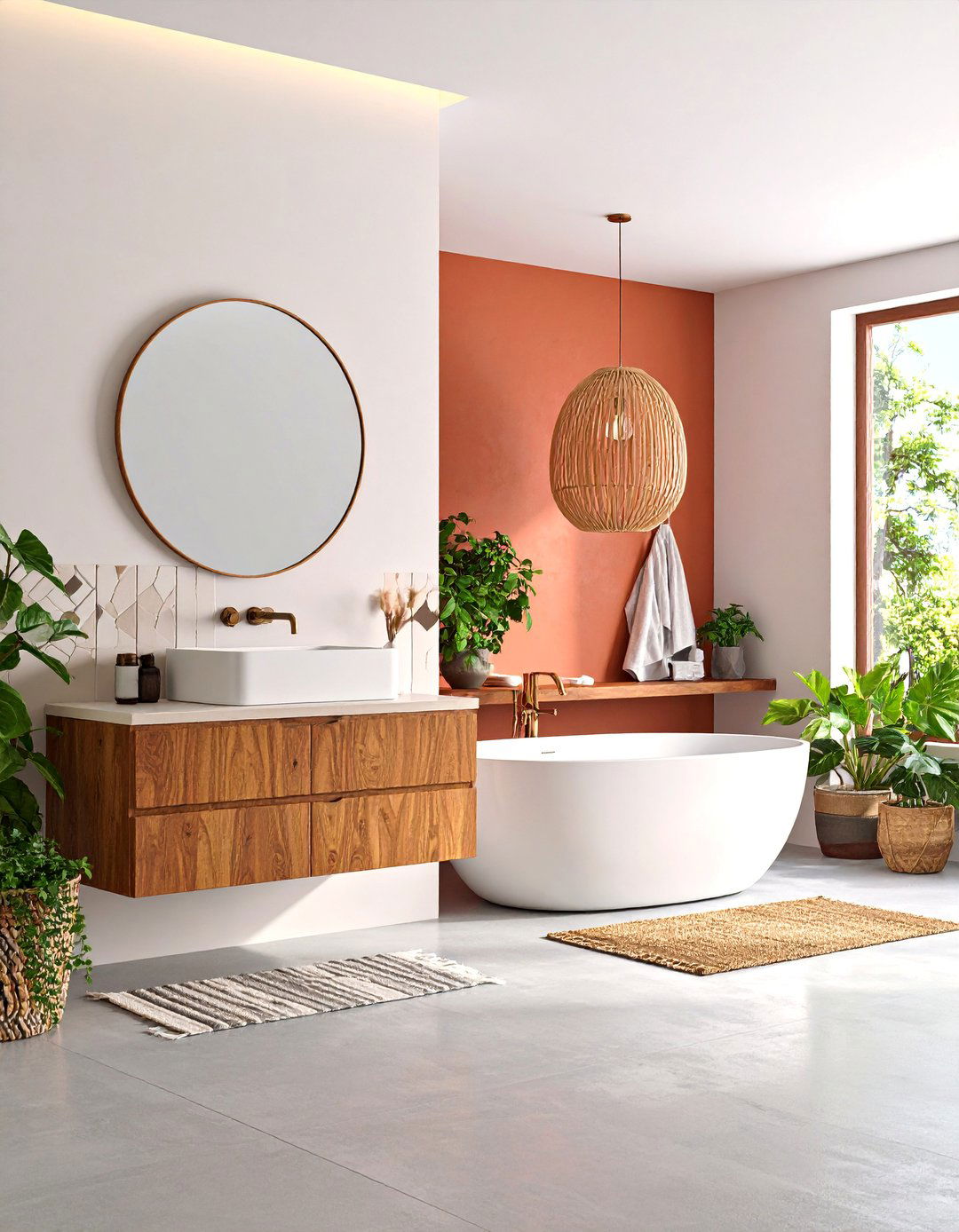
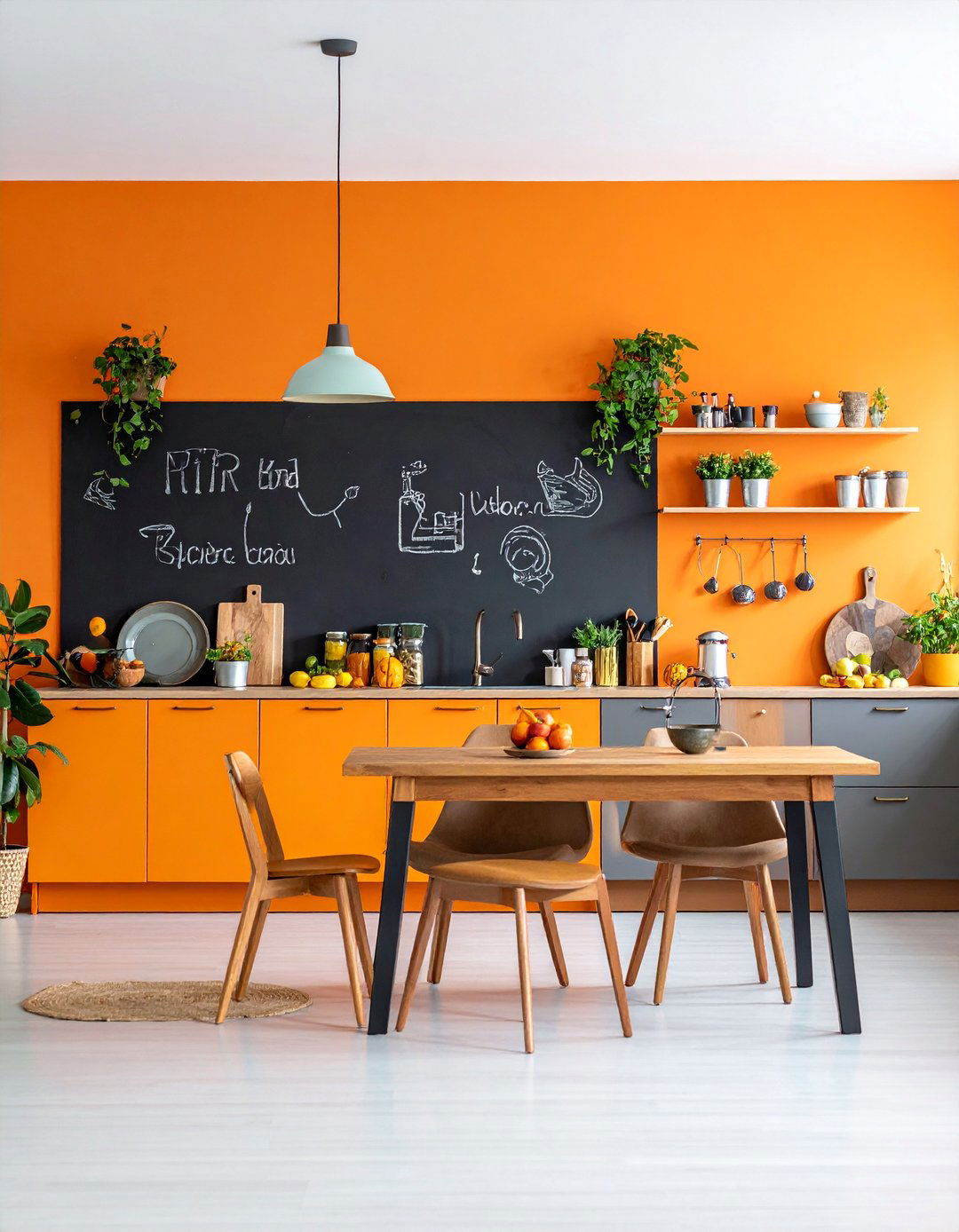





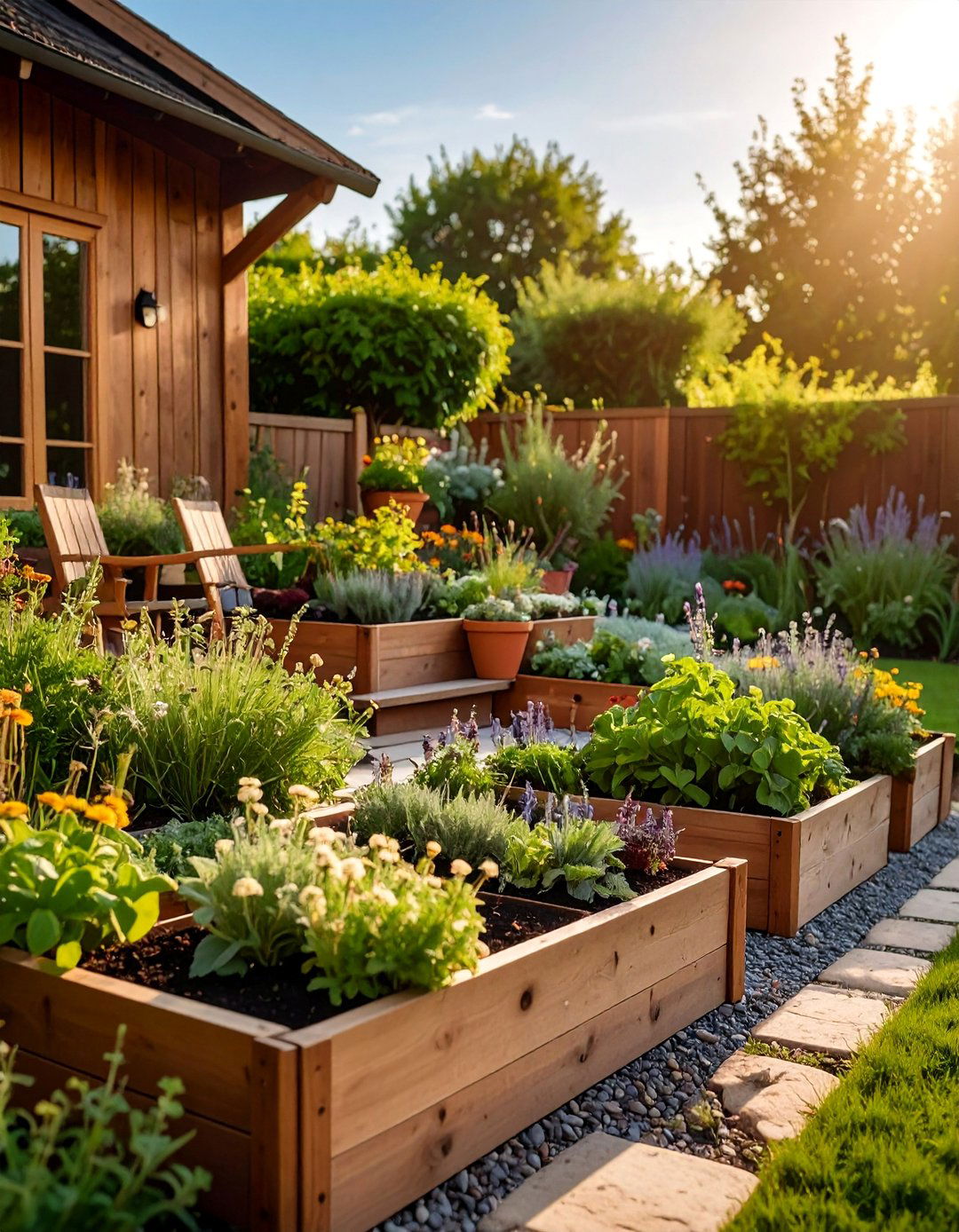
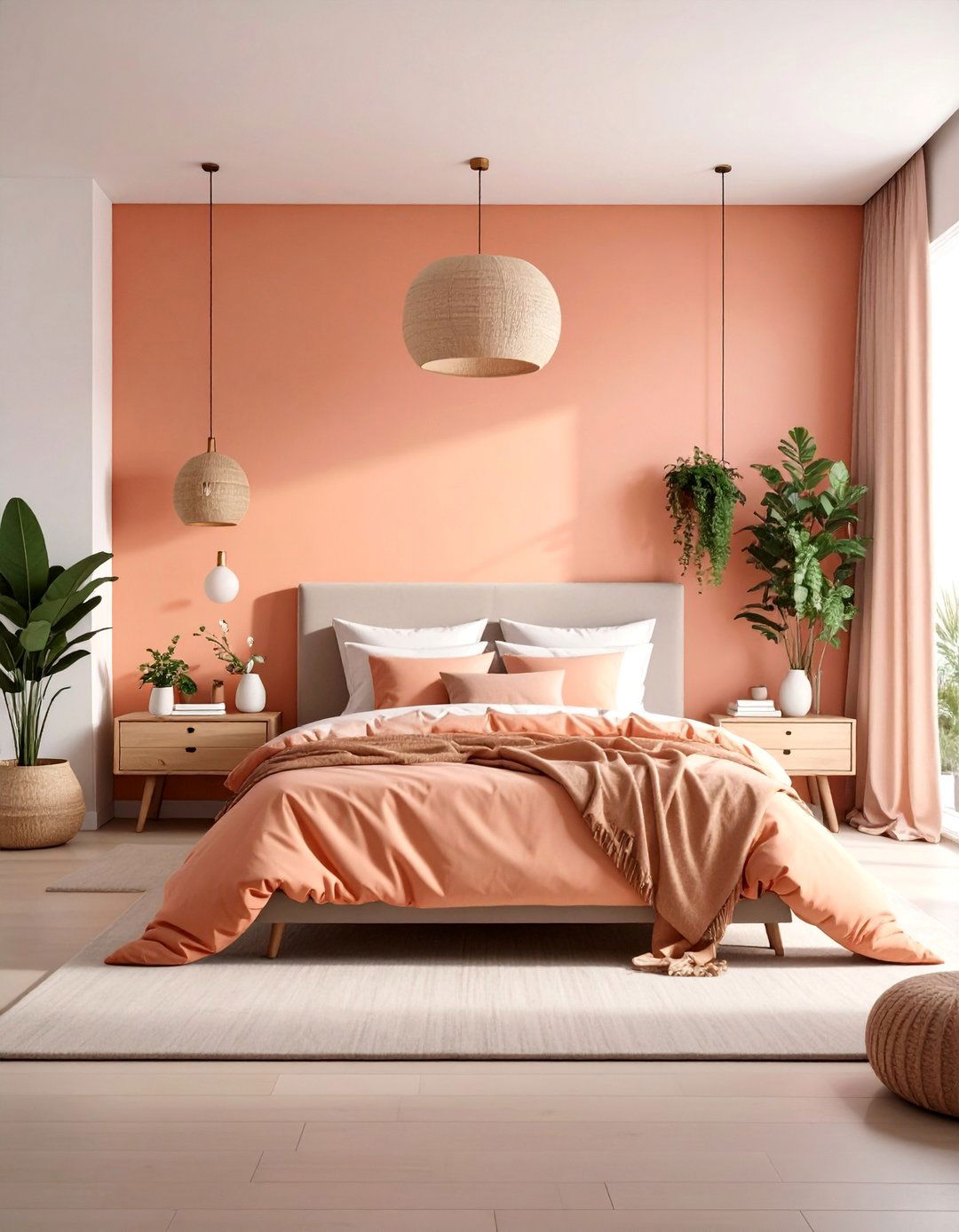
Leave a Reply